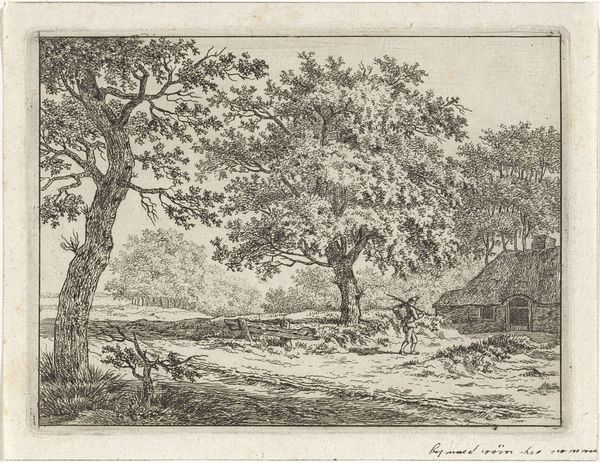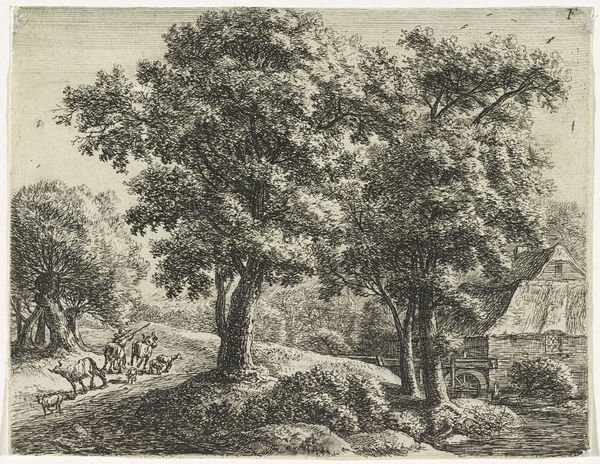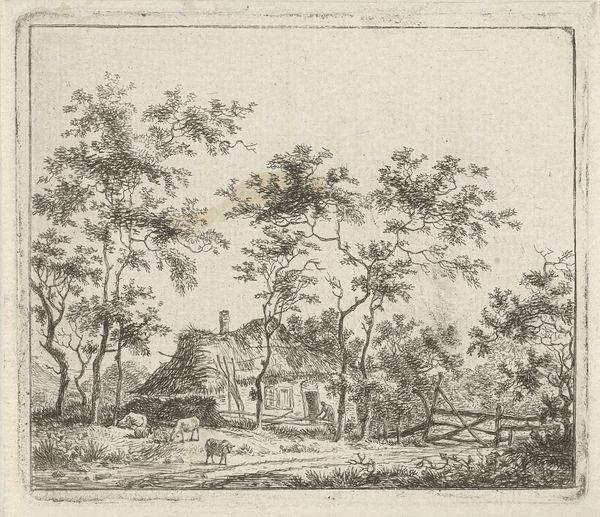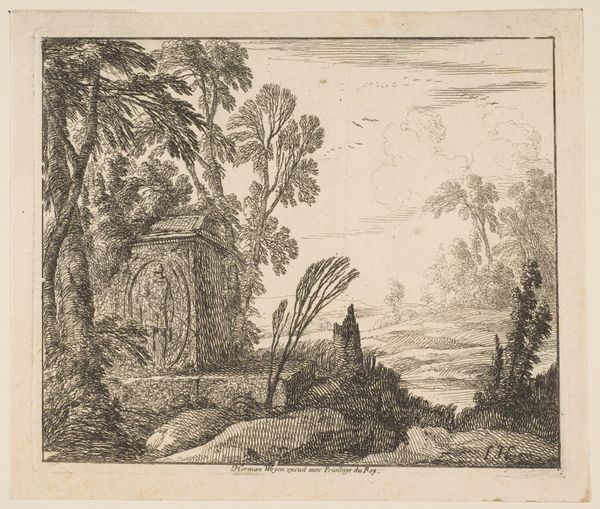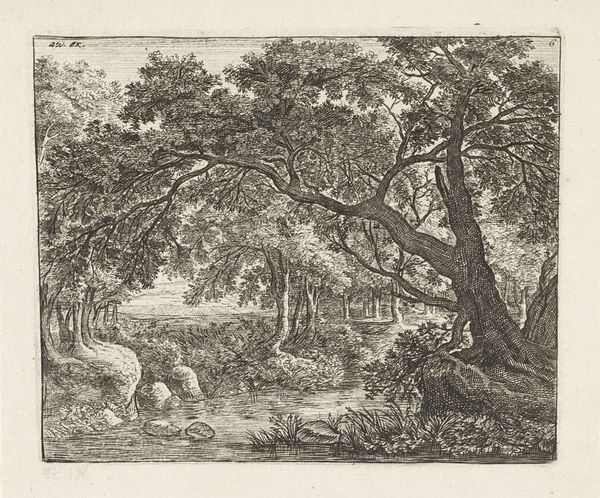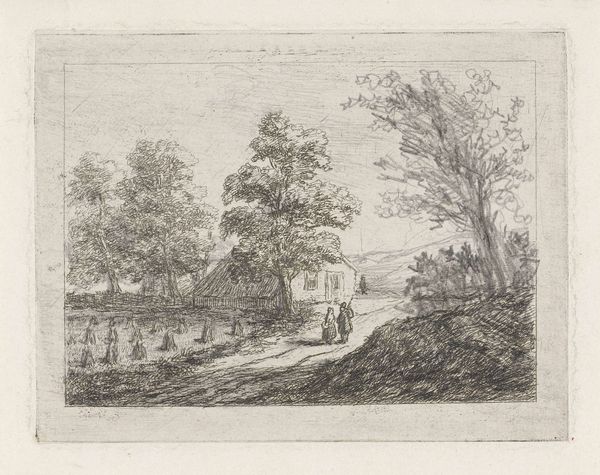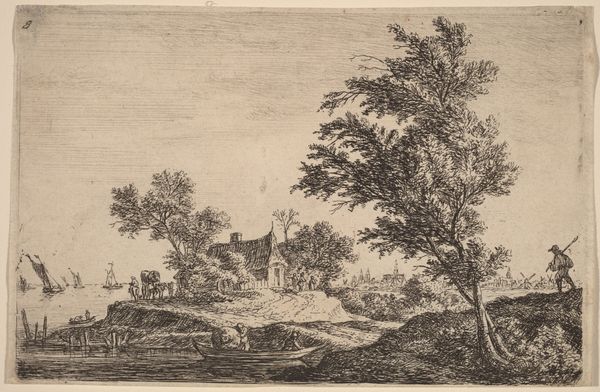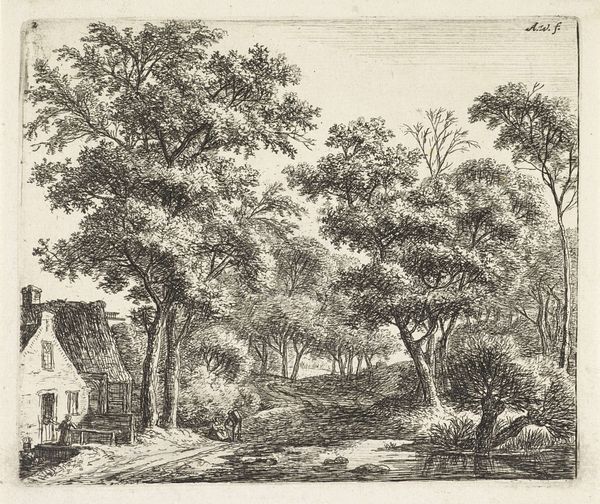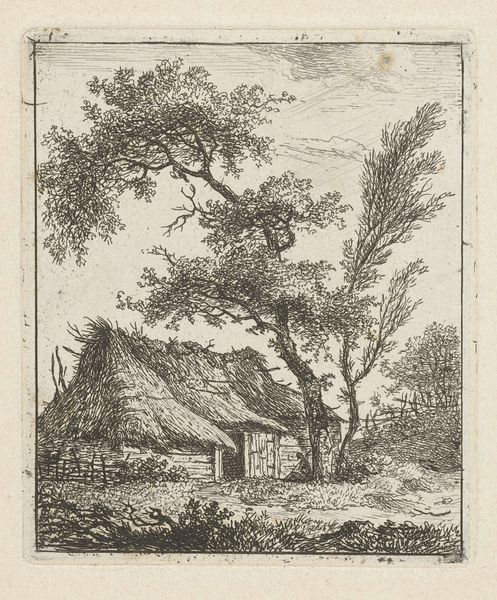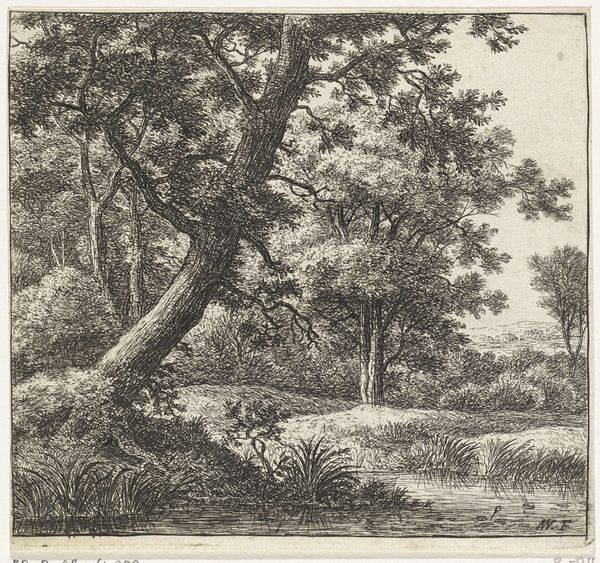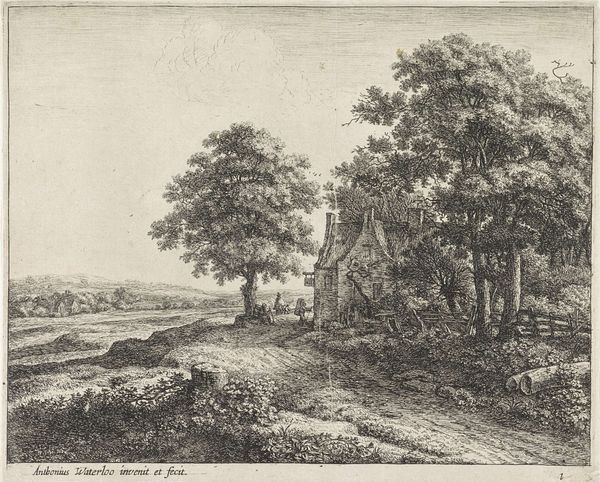
print, etching
#
dutch-golden-age
# print
#
etching
#
landscape
#
genre-painting
Dimensions: height 125 mm, width 191 mm
Copyright: Rijks Museum: Open Domain
Curator: Immediately, this etching gives off such an idyllic and restful atmosphere. Editor: We’re currently looking at “Huifkar bij boerderij,” dating to between 1781 and 1822, attributed to Hermanus Fock and held here at the Rijksmuseum. Fock's name isn't widely known, but prints like these provide fascinating glimpses into the Dutch Golden Age aesthetic even beyond its peak. Curator: It's all carefully composed—the strategic use of line and mass to create such depth is really remarkable for its time. It’s not a chaotic landscape at all. Each line contributes to the structural harmony. Editor: Harmony is a great word. I think what stands out most to me is the humble character of the scene. A simple cart, a farmhouse… it really feels as though it pulls from collective memory of that time. Genre scenes like these were designed for a middle class hungry for nostalgic images of rural virtue. It seems there is even the implication of figures in transit and travel through life. Curator: Transit through life...that tree on the right, firmly planted and reaching, provides such an anchor to the scene. I wonder if it's there not only to create depth and space but also as a symbol of grounding, of the constancy of nature amidst life’s journeys? Editor: Perhaps—trees and especially old, established trees often symbolize history, endurance, and rootedness. In an era defined by huge social shifts, images of steady, rooted life surely had power. And note, too, how that thatched roof is both literally and figuratively “grounded” by being linked to human toil and the land. There is a real human-nature interconnection visualized. Curator: Indeed. So many cultural elements carefully rendered to offer this impression of everyday life as simple but solid. Editor: For me, returning to the work now, it is this harmonious interplay of form and content that speaks most clearly, isn't it? Curator: Agreed. It serves as a gentle reminder of simpler times and how symbols shape our view of ourselves.
Comments
No comments
Be the first to comment and join the conversation on the ultimate creative platform.
